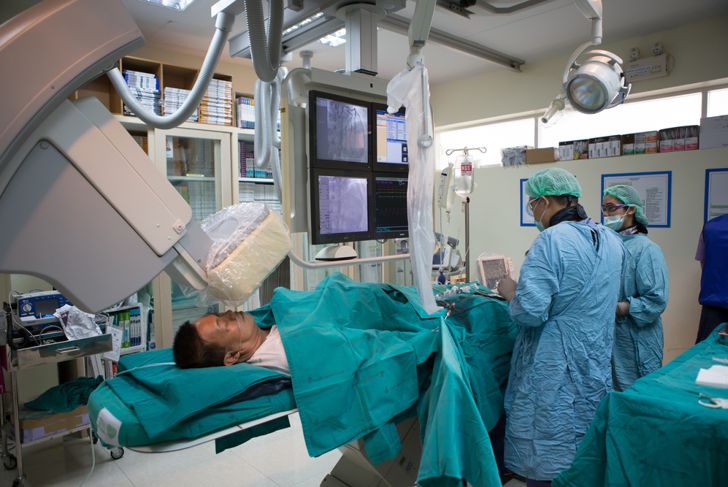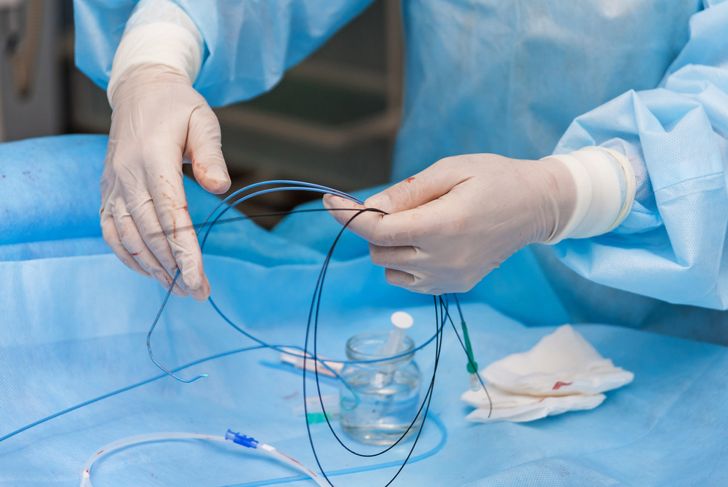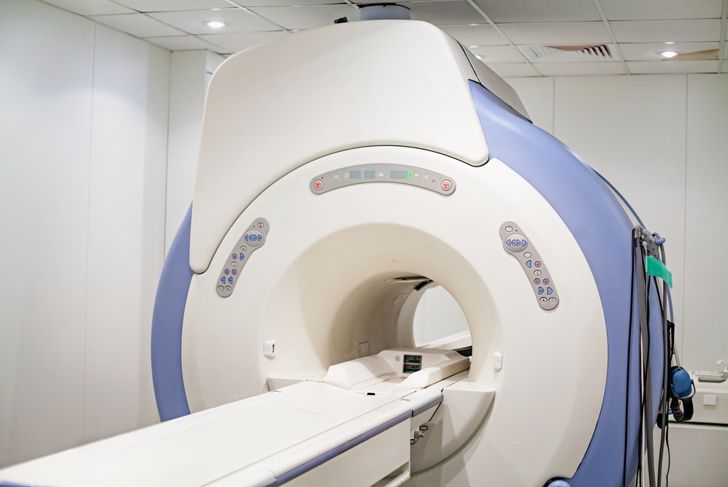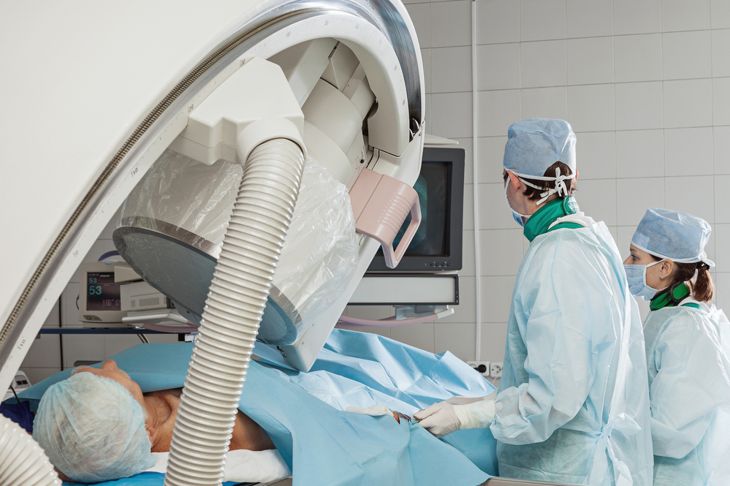Cerebral angiography is a type of medical test that’s minimally invasive. The examiner makes use of an x-ray along with iodine which contains contrast material. These items help produce pictures of the brain’s blood vessels. During this procedure, the examiner inserts a catheter into one of the arteries in your arm or leg. It goes through a tiny incision in your skin. Through the guidance of the x-ray machine, the examiner will navigate the catheter all the way to the area to examine. Once it’s there, the examiner injects the contrast material through the tube. Finally, they will capture the images using the ionizing radiation.
What are the types of cerebral angiography?
There are two main types of cerebral angiography. The first procedure involves the insertion of a catheter into one of the blood vessels in the arm or groin. The examiner then guides the catheter to the part of your brain they will examine. Then the examiner will use x-rays to create the angiogram or the vessel’s picture. Then the dye or contrast gets injected to come up with the images of the brain’s blood vessels. There’s also the procedure that’s noninvasive. This involves an MRI (magnetic resonance imaging) or a CT (computed tomography) to come up with the angiogram.
What are the benefits of cerebral angiography?
First, the cerebral angiography gives you a precise, detailed, and accurate picture of the brain’s blood vessels. This is very helpful especially when doctors have to consider a surgical procedure or other similar treatments. Also, making use of the catheter enables the possibility of combining diagnosis along with treatment in just one procedure. After the process, no radiation would remain in the body of the patient. Typically, x-rays don’t usually have any adverse side effects.
What are the risks of cerebral angiography?
One risk, although slight, is that you might get an allergic reaction from the contrast material. So if you have a history of allergic reactions, you may have to take particular medications before the procedure. This will help reduce the risk of a severe allergic reaction. Because x-ray is part of the procedure, pregnant women may also be at risk, so it’s important to talk to the examiner about this. The same thing goes for nursing mothers. It’s best to wait for at least 24 hours before nursing again.
Why would you need a cerebral angiography?
A cerebral angiography helps to diagnose any conditions which involve the brain’s blood vessels. One condition is that doctor may want to check the possibility of an aneurysm. A bulging or enlarged blood vessel will show up clearly on the angiography. Other conditions include atherosclerosis, blood clots, malformations of blood vessels, and brain tumors. The procedure may also be beneficial in the diagnosis of cerebrovascular disease or even the splitting or dissection of the layers of the blood vessel’s walls which lead to the brain. Cerebral angiography is also essential in pre-surgery evaluations as well as the assessment of vasculitis. Of course, you should get a second opinion first before you finally decide on cerebral angiography.
What information should you share with your doctor before the cerebral angiography?
Before undergoing the procedure, it’s important to share the right information with your doctor. Tell your doctor about all of the medications you’re taking. This also includes all the herbal supplements as well. Also, it’s important to talk about your allergies especially when it comes to medications, chemicals, and substances. Your doctor may recommend that you stop taking specific medications for some time right before the procedure. You should also inform your doctor about any recent medical conditions or illnesses you’ve had.
How do you prepare for the cerebral angiography?
Before you have the cerebral angiography, the doctor would give you some precise instructions so you can prepare for it. Such preparations may include changes in your regular schedule for taking medications. Also, you may have to fast for a period right before the procedure. The doctor will instruct you regarding the medications you can take during the day. Keep in mind that pregnant and nursing mothers should inform the doctor before having the procedure. For the latter, you may have to pump ahead of time as you would need a whole day to clear out all the contrast material from the body before resuming breastfeeding.
Will you feel pain during the cerebral angiography?
The comfort of the patient is critical to the examiner. During the placement of the IV, you may feel a pinprick of pain or a pinch. But you won’t feel any pain during the imaging procedure. The doctor may also give you sedative or pain medications so that you can stay relaxed during the cerebral angiography.
What will you feel after the cerebral angiography?
As mentioned previously, you may feel a slight pinch when the doctor inserts the IV line into your vein. You may also contact something when the examiner injects the local anesthetic. The arteries don’t have any sensation; you’d only feel it in the skin’s incision site. After completion of the procedure, the examiner will take out the catheter. They will then apply pressure immediately to the puncture site to make sure that there’s no bleeding. It takes 10 minutes or so for the small hole in your artery to close. After the procedure, you may resume your regular diet right away. Then after about 12 hours, you can also continue all of your normal activities.
How long will you stay in the hospital?
The examiner may have to monitor you for about 4-6 hours before sending you home. But if you had a noninvasive method, the examiner may send you back right away. If you received sedatives, then you can only get discharged when you’re completely alert, have stable vital signs, and you’re breathing correctly. However, you can’t drive for at least a day after the procedure. So it’s best to call on a friend or family member to go with you to the hospital.
What type of doctor can perform a cerebral angiography?
Many specialists can perform this procedure. Neuroradiologists and neurosurgeons can complete the process. The former specializes in diseases which involve the nervous system while the latter specializes in the surgical care of the nervous system and brain-related disorders. For children, pediatric neurosurgeons can perform the procedure. Other doctors include interventional and vascular radiologists or vascular neurologists. For the noninvasive cerebral angiography, either a radiologic technologist or a radiologist can complete the process.

 Home
Home Health
Health Diet & Nutrition
Diet & Nutrition Living Well
Living Well More
More




















